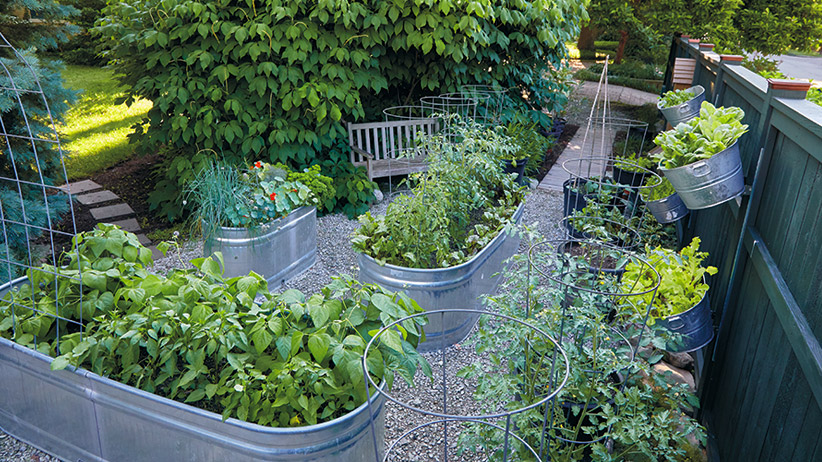Raised beds are excellent features for home gardeners—for convenience and aesthetic appeal. If you are considering adding raised beds to your garden, it can be difficult with all of the choices available. When it comes to durability, weather resistance, and long-term value, galvanized raised beds stand out. These beds are designed to last for years, even in harsh conditions. Galvanized steel is worth considering if you’re looking for a growing solution that won’t rot, crack, or warp over time.
What Are Galvanized Raised Beds?
Galvanized raised beds are made from steel coated with zinc. This process, called galvanization, helps prevent rust and corrosion. The result is a strong, weather-resistant material that holds up better than wood or plastic in outdoor environments. These beds are typically modular and easy to assemble. They come in various shapes and sizes, making them suitable for large garden plots or small backyard spaces.
Why Choose Galvanized Steel Over Other Materials?
Many gardeners start with wooden beds, but wood breaks down over time. Even treated lumber eventually decays or gets damaged by pests. Plastic beds may crack or fade with sun exposure.
Galvanized beds have several clear advantages:
- Longevity: They resist rust and don’t rot, making them ideal for long-term use.
- Strength: Steel walls won’t bow or split under pressure from soil or water.
- Low Maintenance: No need to paint, seal, or replace boards every few years.
- Pest Resistance: Steel doesn’t attract termites or rodents.
- Clean Look: Their sleek, modern finish fits well in urban, suburban, or rural spaces.
Do Galvanized Beds Affect Soil or Plants?
This is a common question from home gardeners. The short answer is no, galvanized steel is safe for gardening. The zinc coating stays on the surface of the metal and doesn’t leach into the soil under normal growing conditions. Many food-safe containers and water storage tanks use galvanized metal. As long as you are not growing in highly acidic soil (which most garden beds don’t use), there is no risk to plants or people.
Where Galvanized Beds Work Best
These beds work well in nearly every growing environment:
- Backyard gardens: Ideal for homeowners who want a clean, organized space.
- Urban patios: Compact designs fit well in areas with limited space.
- Community plots: Easy to install and maintain over time.
- All-weather regions: Withstand rain, sun, frost, and heat without damage.
Setting Up a Galvanized Bed
Installing a metal raised bed is quick and straightforward. Most models use bolt-together panels with pre-drilled holes, and assembling a standard bed should take less than an hour.
Once built, place the bed on level ground. Add a base layer of cardboard or weed barrier cloth, then fill with a mix of topsoil and compost. Because the sides are sturdy, the bed holds its shape even when filled with heavy, wet soil.
Temperature and Soil Health
Some gardeners raise heat concerns, as metal can warm up faster than wood, especially in full sun. In most climates, this actually benefits the soil by warming it earlier in the season, helping jump-start spring planting.
To manage heat during hotter months:
- Use mulch to keep soil cool.
- Water early in the day.
- Plant heat-tolerant crops near the edges.
The soil inside these beds retains moisture well and drains evenly, supporting strong root growth.
How to Maintain Galvanized Metal Beds
Maintenance is simple:
- Wipe down the surface if it gets dirty.
- Check bolts or fasteners once a year.
- Replace soil or top off compost as needed.
The zinc coating protects the steel from rust, even in damp climates. With proper setup, these beds can easily last 20 years or more.
What to Grow in Raised Beds
You can grow nearly anything in your raised beds. Here are some ideas for your home garden:
- Vegetables: Tomatoes, lettuce, peppers, carrots, and beans.
- Herbs: Basil, cilantro, oregano, thyme.
- Flowers: Marigolds, petunias, sunflowers.
- Small fruit: Strawberries and bush varieties of blueberries or raspberries.
Deep beds support root vegetables and larger crops, while shallow designs are perfect for leafy greens.
Final Thoughts
If you’re tired of replacing rotting wood or dealing with warped plastic, galvanized metal raised beds are a smart upgrade. They handle tough weather, need little upkeep, and provide a clean, organized space for growing food and flowers.



